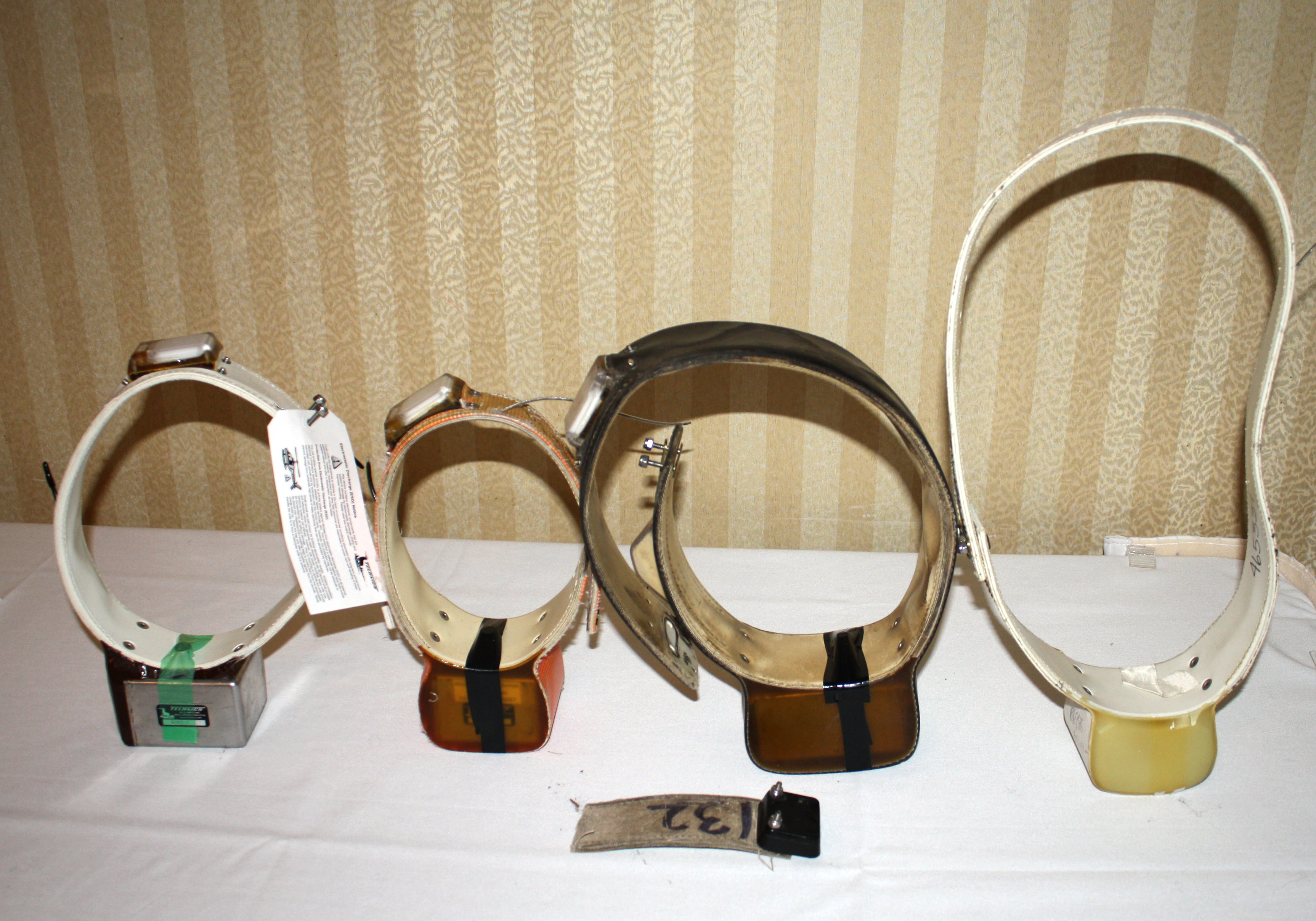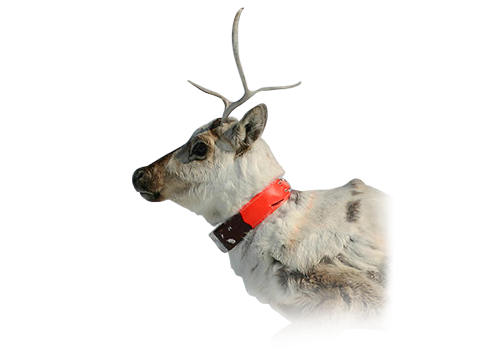Tracking the Caribou by Satellite
In order to understand the caribou, their movements must be monitored. Currently, the best way to get this information is through the use of satellite collars. The information collected via the satellite collars helps to broadly monitor the movements of the wide-ranging Beverly and Qamanirjuaq herds. Location data from collared caribou helps biologists keep tabs on the herd’s migration patterns, and helps to show where calving grounds are situated.

A satellite collaring project has been in place for the Qamanirjuaq caribou since 1993, and for the Beverly herd since 2006.
These collars are only on a small percentage of the herds but they provide a good idea of the herds’ migration throughout the seasons. View our Caribou Migration Animation to see the herds’ migration routes between 2018-2023.
Currently, the Government of Nunavut’s Department of Environment (DOE) manages the Qamanirjuaq caribou satellite collaring project. Nunavut DOE staff map the co-ordinates and send updated maps to band offices, hunters and trappers organizations, government departments, and other groups.
Current Global Positioning System (GPS) collars reveal locations that are accurate to 10 metres or less – much better than the older collars, whose readings could be half a kilometre away from the actual location.
Watch the GNWT’s video “How We Count Caribou” to learn more!
How Satellite Collars Work
Current Global Positioning System (GPS) collars reveal locations that are accurate to 10 metres or less – much better than the older collars, whose readings could be half a kilometre away from the actual location.
To collar a caribou, biologists shoot a net gun from a helicopter to capture the cow of their choice, pulling the net off and quickly collaring and releasing the animal after landing. No drugs are used in the process. Caribou are blindfolded to relieve stress, and their heart rate monitored to ensure it goes down to normal levels.
Noise from helicopters disturbs caribou most in the collaring process. To minimize noise, helicopter engines are either turned off if the weather is warm enough to safely do so without risking the engine freezing, or pilots fly a short distance away.


Today’s satellite collars are very lightweight, with newer GPS collars weighing only about 900 grams each, or less than two pounds – a third less than the older collars. And even the older collars, which are bigger, heavier and bulkier than the new generation of GPS collars, have shown no effect on caribou other than a lot of matting of fur around the neck. The collars last about three years and drop off on their own.
Although the technology described in this section is useful and currently the best way to get this information, the BQCMB recognizes that some people do not like collaring caribou, and some elders and others still oppose it. New ways of collecting this info are being looked at.